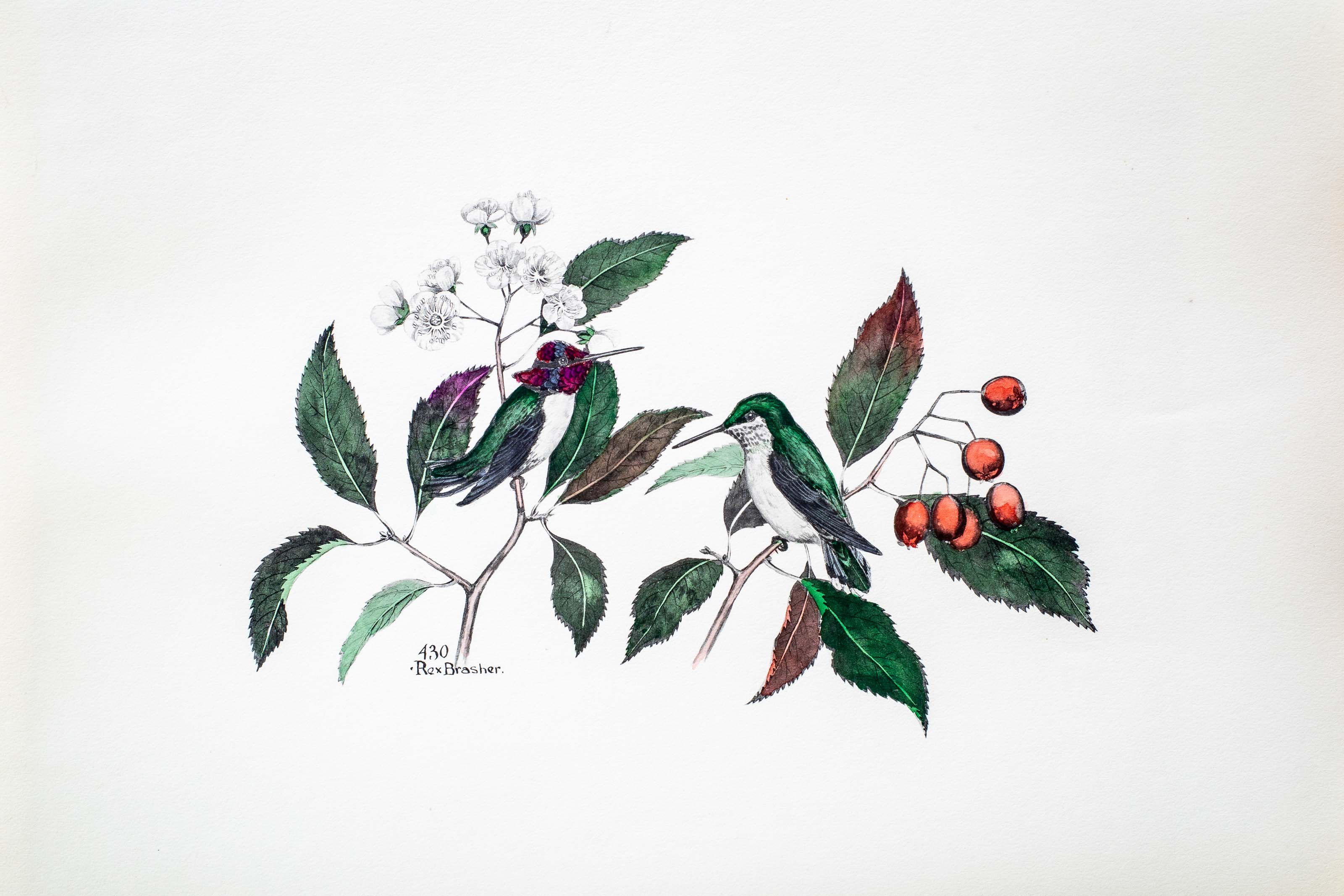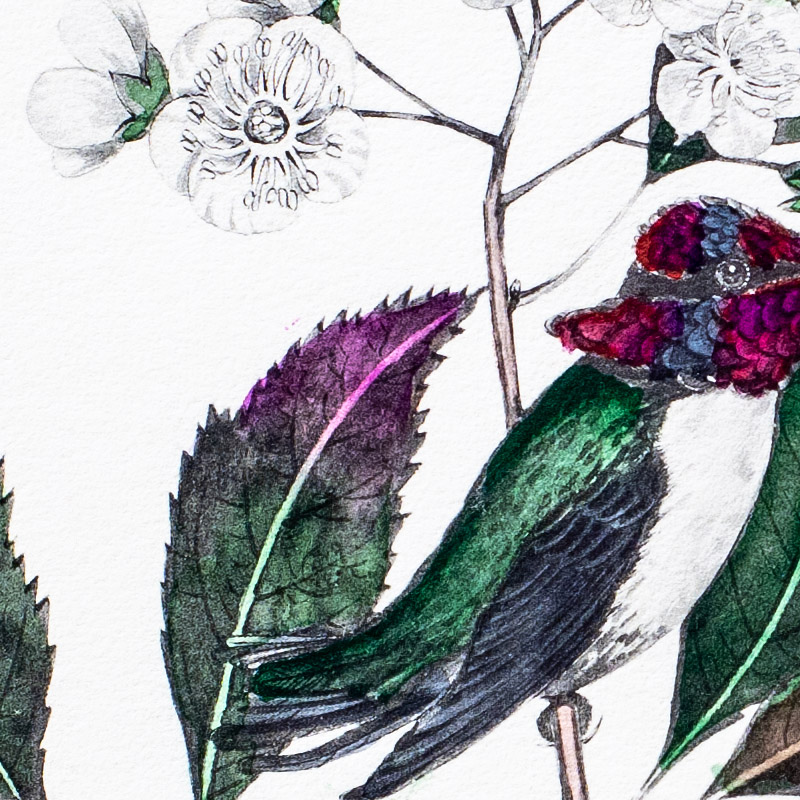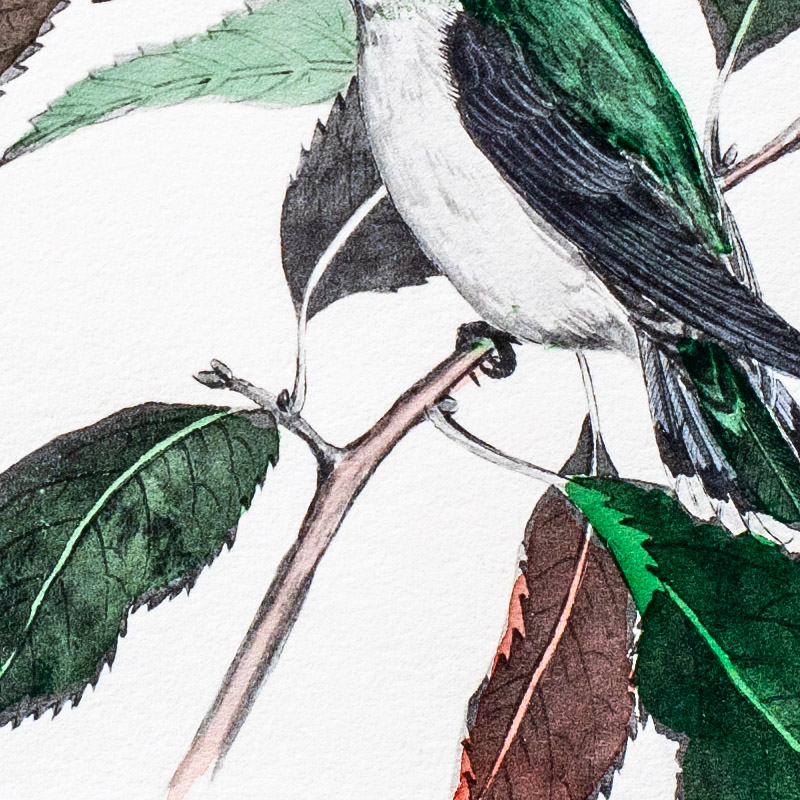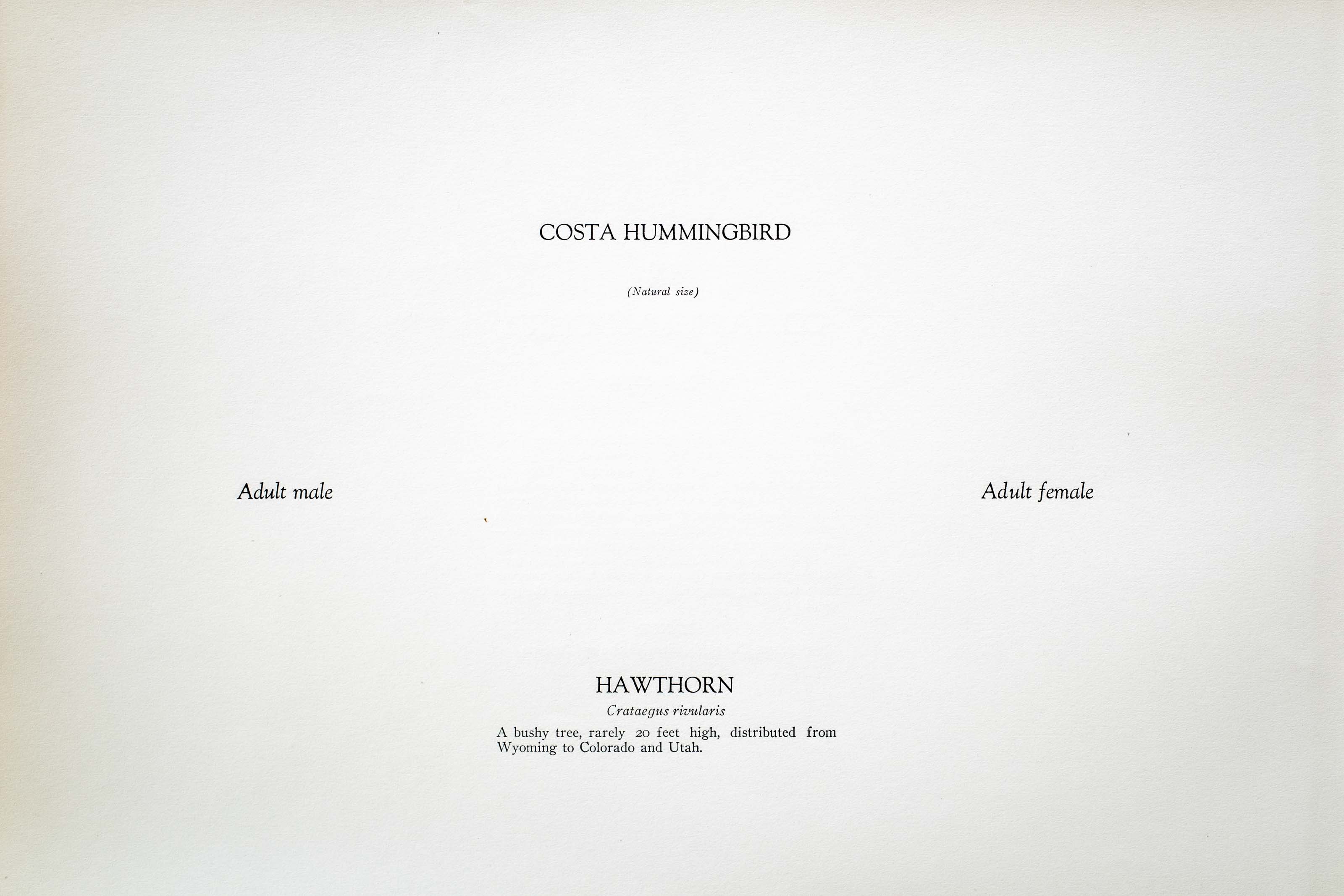






Unknown
1931
7
430
A team of dedicated board members, volunteers, and student interns has published every page in Volume 9. This volume includes 360 images of paintings and lyrical descriptions of birds, now available online for everyone to enjoy anywhere in the world. This is a monumental task. Each volume requires approximately 400 hours to photograph, edit, transcribe, catalog, and publish online. We need your support to complete this work.
If you're tech-savvy, have a good eye, are meticulous with details, and love structured data, please consider volunteering by emailing us at hello@rexbrasher.org.
We encourage all bird lovers and supporters to consider a monetary donation to support our mission to make Rex's work available for everyone. You can provide a one-time or recurring donation online.
Since the first specimen taken by Xantus in 1857, these gaudy little Hummers have become one of the common species in some parts of California. They are more social than some other Hummers and are often seen in small companies. A number of pairs will select a favorite grove and build within short distance of each other. The male's pendulum swing is tremendous — 200 or more feet aloft and the downward swoop is accompanied by a shrill continuous note of sharp tone. As the young grow, the nest expands to accommodate their increasing size. Rather foresighted of the parents!
Southern California, New Mexico and Arizona.
A bushy tree, rarely 20 feet high, distributed from Wyoming to Colorado and Utah.